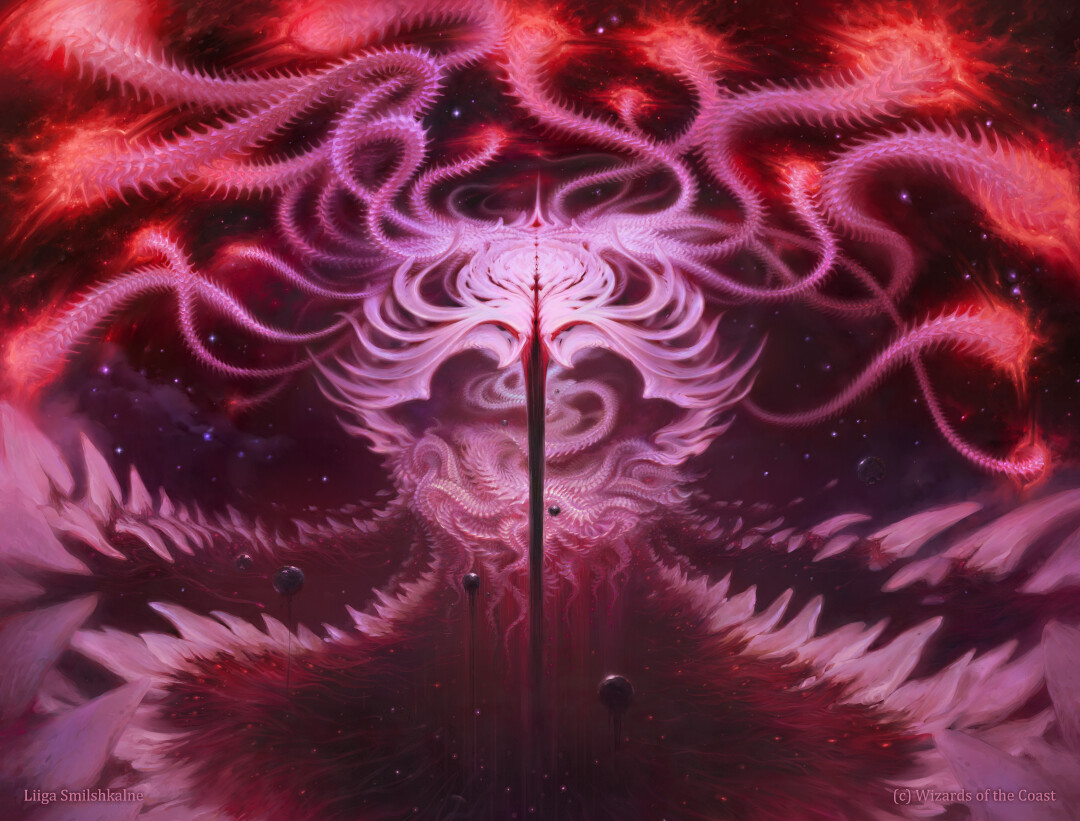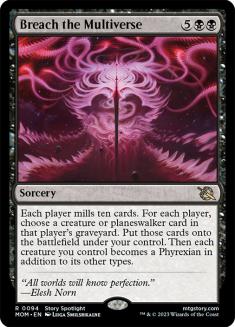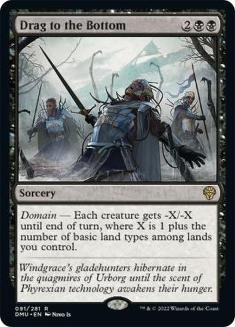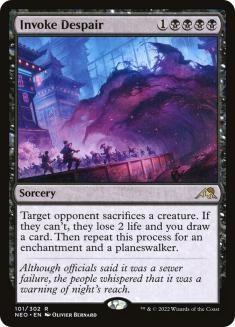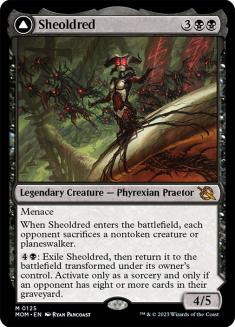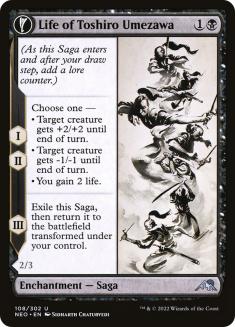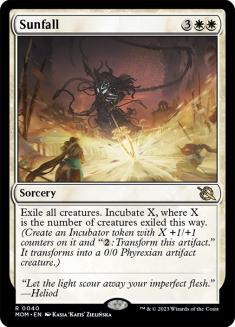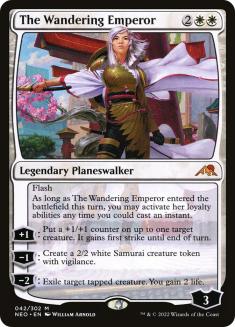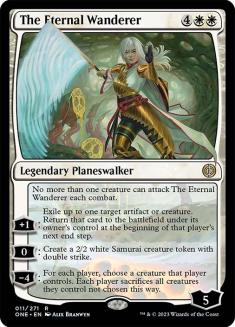These days, I am swamped with personal and professional obligations, making it difficult to adequately prepare for all competitive formats. I have stayed up to speed with Pioneer and Modern, since those formats are tournament organizers’ favorites. With SCG CON Baltimore quickly approaching, I have made sure Azorius Control (Kaheera) is ready to roll in Modern. Immediately after, it is back to Pioneer testing, where Azorius Control is equally potent.
It is nice to have a strong control deck option in each of the most-played competitive formats. Before it was this obvious, control players would have to exert a ton of effort to just claw their way into the Tier 2 conversation. The continued improvement of disruption has offset the power creep and then some, allowing my favorite archetype to rise to the top. The only downside is the time it takes to get full matches of Magic completed, especially when I am trying to scratch that addictive itch at random free points in the day.
Entering the Arena
I have not been an avid user of Magic Arena since its inception years ago. I will log in to battle occasionally; however, I have always used Magic Online (MTGO) as the source for my testing. Not having the eternal formats at your fingertips makes it difficult to justify using Magic Arena, especially with many of the events requiring Pioneer or Modern preparation. Even though it is not the most effective use of my time, though, there is something special about breaking out the phone while on the couch with my son, getting a visually appealing game of Magic in while chatting it up.
Magic Arena runs beautifully on the newest phones, which was not the case with older models. I remember trying to do this a couple of years ago, and it was not a user-friendly experience. Things were choppy and nonresponsive, and some features flat-out did not work. The longer the game went, the worse the play experience would be. With the current app in iOS, I have smooth, uninterrupted gameplay whenever I can spare fifteen minutes. Sparing 30 minutes or more is a stretch in my situation, so I opted to get into the Best-of-One mode, which has been a pleasant palate cleanser to the traditional testing model.
Best-of-One
Professional players have snubbed Best-of-One for years, and I totally get it. It is not traditional Magic, missing the key sideboarded games feature that helps make this the best game out there. Not having sideboarded games makes for some frustrating draws on both sides, reducing the interaction and creating worse gameplay overall. Even with that downside, it is still Magic and entertaining.
There is likely a strategic way to build maindecks to attack this type of format; however, I just built two control decks the same way I would in Best-of-Three.
Dimir and Azorius Control were the two decks I built for recreational use, and I was able to get to Mythic rank fairly quickly. It was not a rush attempt for me, getting in a game here and there for a couple of weeks, a process that I ended up enjoying.
Dimir Control
Creatures (3)
Planeswalkers (4)
Lands (28)
Spells (25)

I started with the Dimir Control deck, wanting to see how powerful Hidetsugu and Kairi was in a true control shell. After a few days of gaming with it, I was not disappointed. The free cast of Invoke Despair was the first draw, but it was nothing compared to the mother of all expensive sorceries in Standard.
Breach the Multiverse made this deck not only strong, but also a blast to play. There is something special about dropping a big creature on Turn 5, getting a Brainstorm in, the opponent wasting resources to kill it, dealing seven damage, and then bringing it immediately back with their best permanent. Breach the Multiverse should be a great deterrent to killing Hidetsugu and Kairi, but Hidetsugu and Kairi is hard to ignore. Untapping with it opens the possibility of a counterspell to protect it, while dealing heavy damage output. Hidetsugu and Kairi is the captain of the Dimir Control ship and very fun to play.
Dimir Control corners the market on removal strength, providing the best bang for your buck in the early-game. It is not a shock that Cut Down and Go for the Throat are great in Standard. They see play in every black deck in the format, and for good reason.
The real surprise for most is Drag to the Bottom, a sweeper that has overperformed from the start. In most scenarios, it is a Wrath of God that gets around indestructible creatures. Even in a pinch, it works well with Cut Down on Turn 5, especially if the trilands are not cooperating. The strength of Drag to the Bottom comes at a hefty cost, forcing me to butcher the manabase to make it work. All the spells are easy to cast; however, it all requires more enters-the-battlefield tapped lands than I would normally play.
The rest of this Dimir Control deck consists of powerful planeswalkers and the standard blue disruption package. I would vouch for the viability of this deck, except that a recent event has dealt a huge blow to fans of Hidetsugu and Kairi.
With the banning of Invoke Despair, Dimir Control was taken out of contention as my favorite Standard control deck. I was partial to Azorius Control, but this deck was more fun to play. I still have not abandoned it, even though it did lose a chunk of its power.
For those who want to continue to Breach the Multiverse, I would add a single Sheoldred and a third Life of Toshiro Umezawa. Sheoldred has been a great card to hit with Breach the Multiverse and a powerful answer to an opposing planeswalker. It is also a win condition that must be answered, or else it will wreak havoc on any opponent. Life of Toshiro Umezawa has been a godsend in the Best-of-One world, where people are trying to get a three-minute match in before moving on to the next prey.
Having an answer to Thalia, Guardian of Thraben, in addition to being strong against red decks, is the primary purpose of Life of Toshiro Umezawa. Past the obvious, it gains four life and creates a creature, an effect that buys plenty of time to get the pieces in place for a free Breach of the Multiverse.
This deck is still playable, but the best option for those trying to chase Mythic is Azorius Control.
Azorius Control
Planeswalkers (6)
Lands (27)
Spells (27)

Azorius Control was putting up strong numbers for me in Standard, even with Fable of the Mirror-Breaker, Invoke Despair, and Reckoner Bankbuster. All three cards were very difficult to cleanly answer, but Azorius Control was still squeaking out victories against them. These bannings have allowed Azorius Control’s stock to skyrocket. The list you see is exactly what I played with those cards in the format, so some slight modifications may need to take place.
I have completely leaned on the strength of Sunfall, one of the most powerful sweepers that white has had in many years. A clean exile of all creatures, while also producing a win condition, is a deal at five mana. Due to the sweeper strength in Azorius Control, I was able to drop Lay Down Arms and rely solely on Ossification and March of Otherworldly Light to handle the problematic creatures of the early-game. I was nervous about putting that much faith in two-cost removal, especially March of Otherworldly Light, which has heavy costs attached for bigger creatures, but it has worked out very well.
The format had a strong aggro presence, which has only increased since the bannings. Mono-White Aggro saw heavy play before and continues to grow in popularity online. This may require additional removal in the early-game, adding Lay Down Arms and significantly changing the manabase. I have still been able to handle the aggro deck, winning the matchup more often than losing, but it is always close. Handling Thalia, Guardian of Thraben and Anointed Peacekeeper to ensure an on-time Sunfall is key, a process that would be easier to accomplish with a one-cost removal spell. If I keep winning with this list against Mono-White Aggro, then I will hold off on the drastic change.
The rest of the list contains the best in the business, summoning powerful planeswalkers like The Wandering Emperor; Teferi, Temporal Pilgrim; and The Eternal Wanderer to close out the game. I have one copy of Invasion of New Phyrexia as a late-game bomb, which often ends the game immediately upon resolution. Both control decks use the one Mirrex in the manabase, a land that often leads me to victory against midrange and control foes. The blue card draw and disruption are close to the same between the two control decks. Dissipate, Make Disappear, and Memory Deluge are great and create a strong foundation for a Standard control deck.
This version of Azorius Control has led me to the most victories on Magic Arena. I would likely play this exact maindeck in a large event, with a sideboard created to address other slow decks, Mono-White, and Mono-Red Aggro. The post-bannings format has just arrived, so I will see how it shakes out before determining the sideboard answers. In the meantime, I will continue to enjoy Best-of-One with Azorius Control while managing my adult responsibilities.

